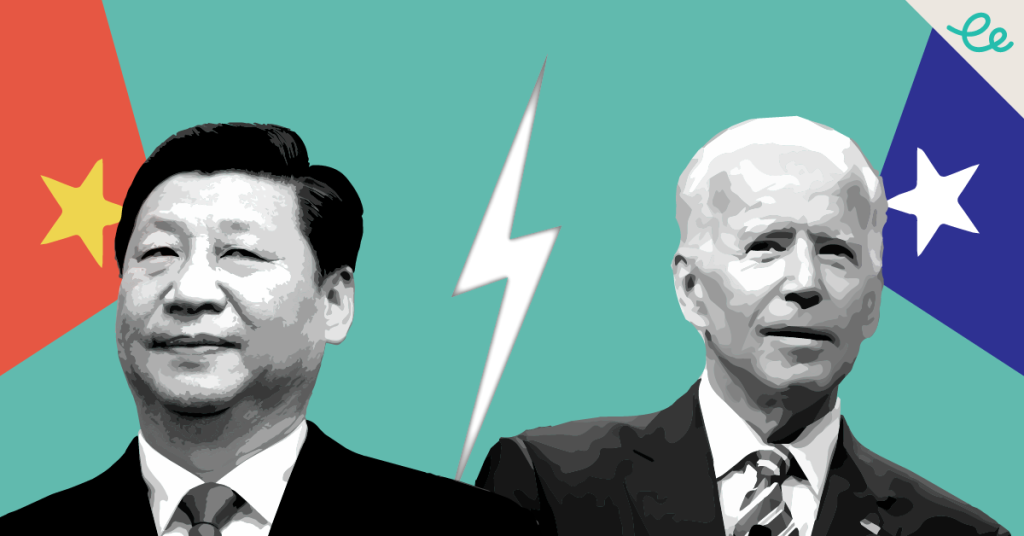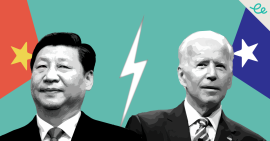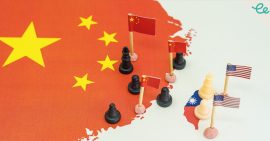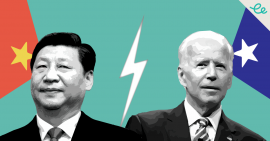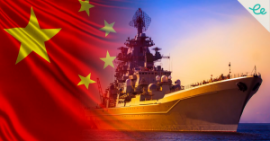Xi-Biden call tackles tensions, but Trump waits in wings
Flush with the optimism of spring, top officials kicked April off by sounding a hopeful tone for better US-China cooperation. The two presidents held their first conversation since November. And US Treasury Secretary Janet Yellen followed up with a China visit that stressed bilateral ties have stabilised amid a litany of divisive issues.
Yet underneath the “candid and constructive” talks, and the Biden administration’s denial that it wants to “decouple” from China, the world’s most important bilateral relationship remains in real danger of getting worse. US restrictions on Chinese technology are expanding. Tariff-threatening Donald Trump is, once more, the largest looming risk for US-China ties.
Polls show the presumptive nominees (81 and 77) for November’s election neck and neck. Across the Pacific, Xi Jinping faces no formal term limits. He has named no successor. And the odds appear in his favour to greet America’s 47th and 48th Presidents.
Xi will be 82 in 2035 (the same age as Chairman Mao when he died), and 96 in 2049, the PRC’s 100th birthday. Xi’s mother turns 98 in 2024, while Xi’s father was 88 at his death in 2022. As Xi likes to say, “time and momentum are on our side.”
It’s good to talk
Xi and Joe Biden spoke by phone on April 2, their first chat since meeting in San Francisco in November. The pair reaffirmed the importance of strengthening high-level dialogue, while differing sharply on most geopolitical and ideological issues. Xi urged Washington to forge a correct strategic perception of China. He said it was “fundamental” and “just like the first button of a shirt that must be put right.”
Yellen spent her trip, her second to China in the last year, warning that the world cannot absorb China’s overinvestment in factory capacity for clean energy goods. But she managed to do so without riling her hosts. “While we have more to do, I believe that, over the past year, we have put our bilateral relationship on more stable footing,” she told Premier Li Qiang.
Beijing rebuffed Yellen’s criticisms but welcomed her charm offensive. “China sincerely hopes that the two countries will be partners, not adversaries,” said Li. Chinese internet users had closely followed her itinerary, showing “expectation and hope for the China-US relationship to continue to improve”, he added.
Yellen must now decide whether to advise Biden to move toward raising US tariffs on Chinese electric vehicles, solar panels and other clean energy goods to protect US producers and workers. If elected, Trump has pledged to slap 60% tariffs on all imports from China. This will likely incur a heavy cost for the economy and consumers. A steep increase in tariffs would hobble US growth and push up inflation, warned Goldman Sachs.
We won’t sit idly by
The US-China tech war stands front and centre in ongoing tensions. The President emphasised that the US “will continue to take necessary actions to prevent advanced US technologies from being used to undermine our national security, without unduly limiting trade and investment”, Biden told Xi.
US sanctions on China and Chinese-owned companies comprise an “endless stream of measures to suppress China’s economy, trade, science and technology”, replied Xi. “This is not ‘de-risking’ but creating risks…If the US is adamant on containing China’s hi-tech development and depriving China of its legitimate right to development, China is not going to sit back and watch,” he warned.
The official Chinese readout of their call included Xi’s comments on tech. This came right after his more familiar warning that “the Taiwan question” is the first red line in China-US relations. Such prominence underscores the importance of the tech war among Beijing’s multiple worries about US policy and priorities.
US restrictions and China’s response
US restrictions on Chinese technology are expanding to encompass a diverse range of sectors. But these restrictions have accelerated China’s drive to indigenise technological development and supply chains. Xi’s “New Quality Productive Forces” is the key phrase for renewed efforts to boost high tech innovation.
For many years, Beijing has sought to reduce dependence on US technologies it perceives as constituting a strategic vulnerability. It has already successfully decoupled hardware and Internet technology from the US. The next front is indigenisation of semiconductor production, the lack of which remains a key vulnerability.
Enodo Economics believes US determination to slow China’s progress in advanced technologies will almost certainly translate into further restrictions. Expect the fenced yard to get bigger and the walls higher. The two countries are now caught up in an action/reaction dynamic. The outcome defies easy forecasts, because the evolution of advanced technologies is so inherently unpredictable.
But China is developing a critical mass of advanced technology capabilities. This could mean that absolute advantage may not be as significant as before. And in the long term, US efforts to constrain China will fail. This November’s election won’t be dominated by China. But its rising power and influence will continue to occupy US policymakers’ time and thoughts.
If you want to learn more about the Sino-US decoupling, register for Enodo Economics’ free trial.
Related Articles:
China and US Spar Over Taiwan Elections, but US Elections Pose Bigger Test
Laying the Groundwork for Better US-China Relations
Taiwan Presidential Election Set to Shape US China Relations

